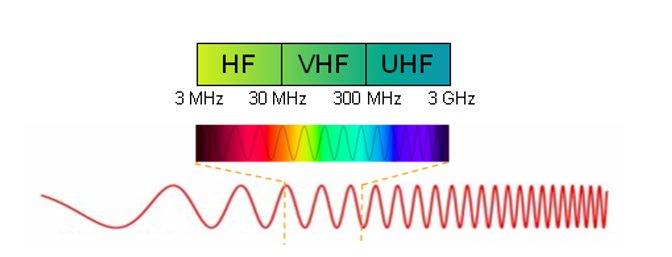VHF or UHF radio
What are the differences between VHF and UHF?
ICOM two-way radios are available in VHF and in UHF with different frequency bands:
- VHF radios operate on the 136 - 174 MHz band
- UHF radios on the 400 - 470 MHz band (NXDN technology, dPMR standard)
In material terms, VHF and UHF radios are almost identical, only the antennas have a slightly different length, with VHF antennas being larger than UHF antennas.
Nevertheless, VHF and UHF radios have different advantages and the type of radio you need depends on your situation.

- Your use is mainly indoor:
In general, UHF radios are better suited for indoor use because their wavelength is shorter and allows for better penetration into steel and concrete elements.
Inside, VHF radio signals tend to degrade more than UHF signals.
UHF radios are also particularly suitable for use inside buildings such as shopping malls, office buildings, underground car parks...
UHF radios will therefore be more suitable in cities and areas with high urbanization.
- Your use is mainly outdoor:
VHF radios are best suited for outdoor use on open sites with direct visibility. They are perfect for rural areas, on open ground, hilly landscapes,... VHF radios will therefore be more suitable outside cities and rural areas.
- Your use is indoor AND outdoor:
In the case of a site with buildings and exteriors to be covered, or extended sites with obstacles or reinforced concrete (basement, floors,...), it is advisable to use radios on the UHF band.
However, depending on the specificities of the site, our technicians study on site the most suitable solution to guarantee you reliable and quality communications adapted to the uses and characteristics of your business.


